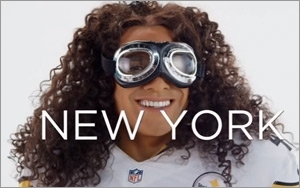
Beauty products — from nail polish to wrinkle cream to aftershave and dandruff shampoo — are found in 94% of homes. But sales aren’t growing, despite
heavy spending on marketing. A big part of the problem, according to new research from Nielsen, is that as drugstore shelves grow increasingly crowded with products, the ads and packaging for them
disappear into a sea of sameness.
Total beauty sales came in at about $33.5 billion last year, says Nielsen’s James Russo, SVP of global consumer insights. Yet in mass
channels, sales gained just 0.4%. And there are pockets of healthy growth, including prestige products, the men’s category, the Hispanic sector, and natural and organic beauty products, which
are up 24%.
But the category is fragmenting, with products increasingly available in such value channels as grocery, dollar and warehouse/club stores, as well as in salons and
online. Tellingly, trips to drugstores to buy beauty products fell more than 16% last year.
advertisement
advertisement
Generic ads are definitely an issue. “Beauty ads are underperforming, and 20% less
memorable than all other consumer packaged goods advertising for women ages 18 and over,” he tells Marketing Daily. “Often, the ads are not breaking through.”
Two exceptions: He says Garnier’s Nutrisse haircolor ads featuring comedian Tina Fey have boosted sales by 4.5%, when the entire category is down 5.3%. And Head & Shoulders’
campaign for men, featuring football player Troy Polamalu, is even more powerful. “That ad campaign gets the attention of men within a framework that resonates with them, and it’s working.
Dollar sales are up 14%, while the overall beauty category is struggling.”
One solution for beauty marketers is to target demographic differences more precisely. While Gen Y
women are among the biggest consumers of beauty brands, younger Millennials (18 to 25) are drawn more to beauty product demonstration visuals than those between 26 and 34, who respond better to glam
shots.
The takeaway, he says, is that despite its struggles, “beauty is still a mega category, with growth across genders, the demographic spectrum and across cultures. One
clear way to increase underperforming brands is to create ads and packaging that somehow gets noticed, and manages to connect with the right audience.”